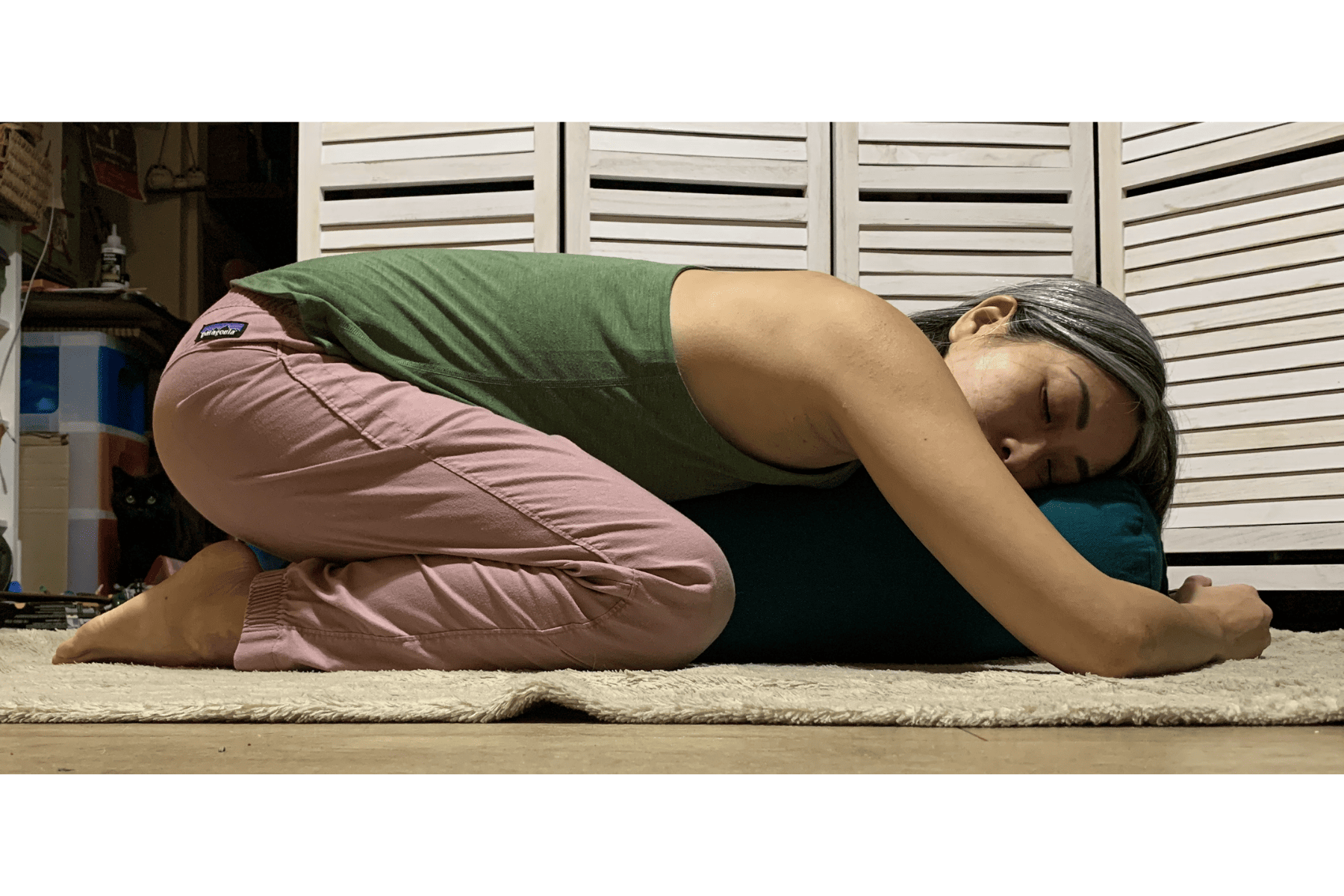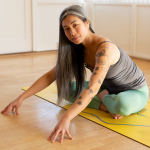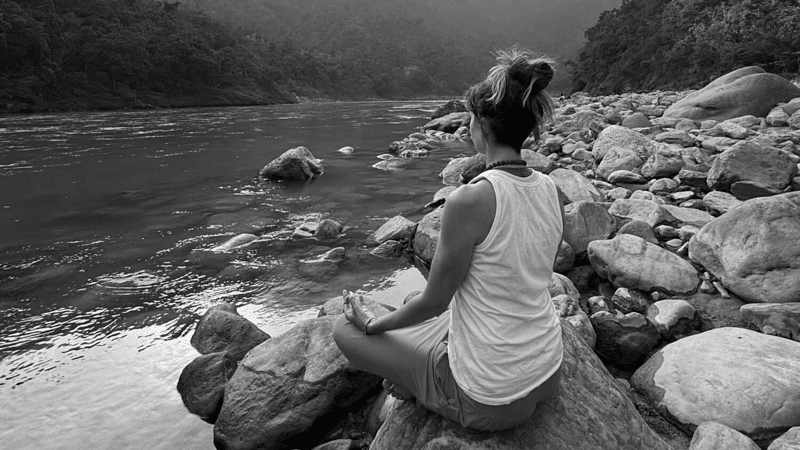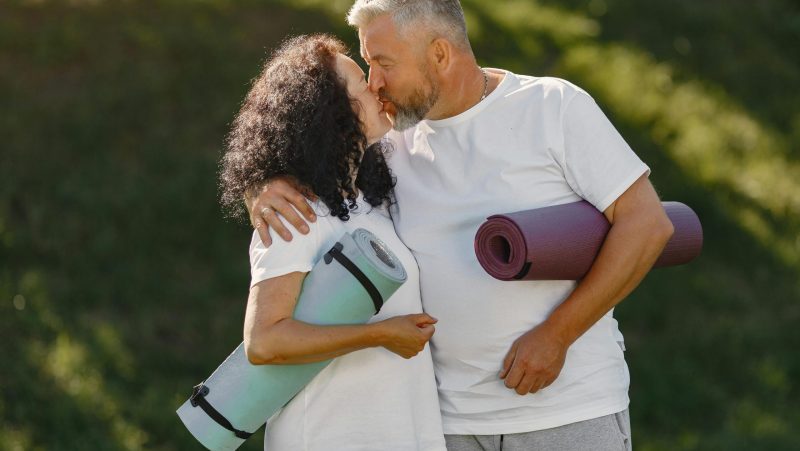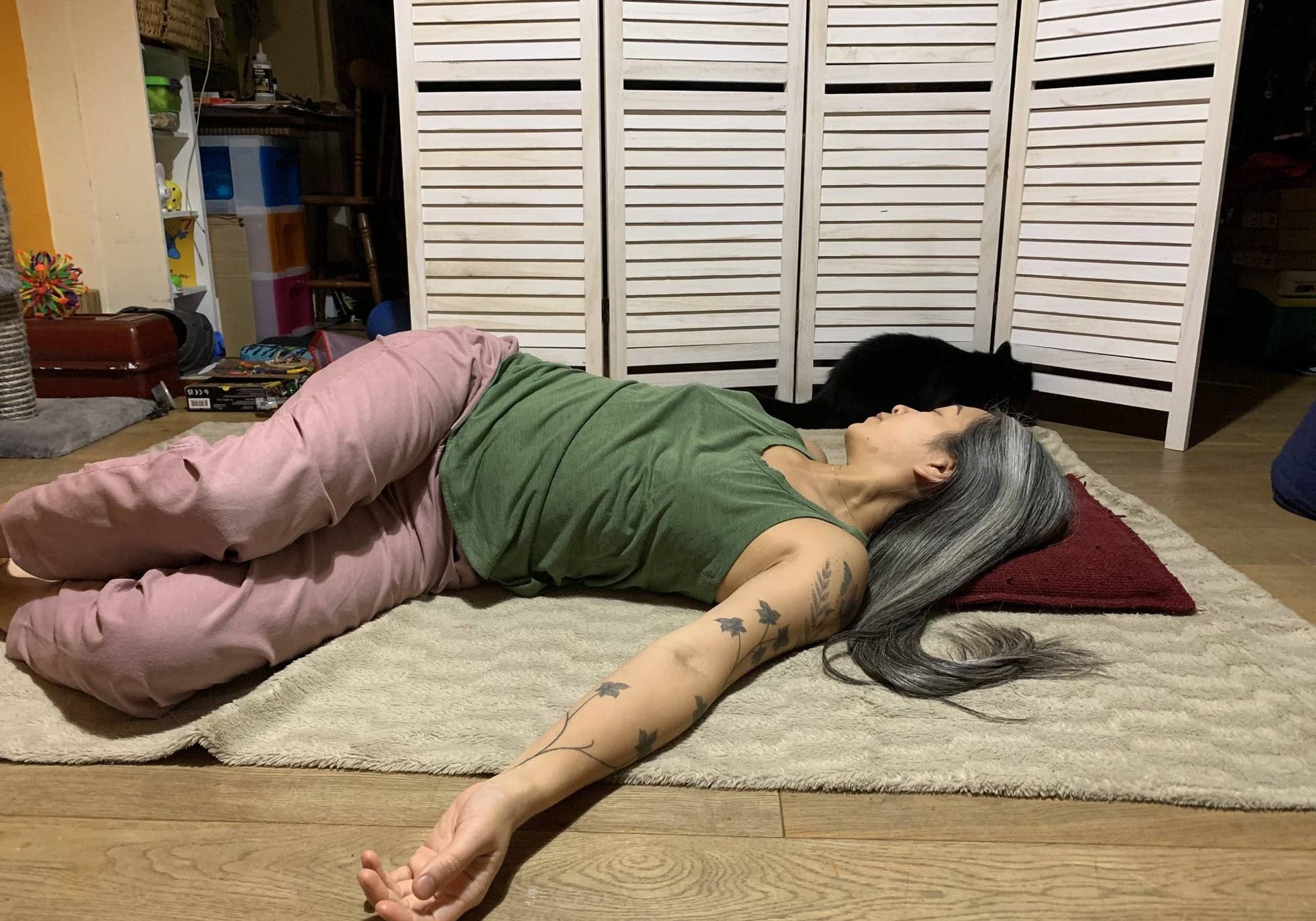
Five Poses That help me Through the Winter
Embracing Rest and Reflection with Five Rejuvenating Yoga Poses for the Season - By Olivia Mclaren
Reading time: 4 minutes
Winter can be a harsh time for many – the short cold days and the long dark nights. Here in Lewes, we don’t even get snow; instead, it’s just wet and grey. The body feels sluggish from the lack of sunlight and stiff from being confined in thick winter coats.
Our body naturally wants to slow down in the winter, but for many of us, we are still expected to remain productive by society, at work, at school and at home. How often do you get through December and instead of feeling the promised renewed energy with the arrival of the new year you just feel drained? I certainly do!
This winter, I will be trying a slightly different approach. The plan is to find opportunities throughout the day and week to cultivate rest and reflection – radical! Here are my five go-to yoga poses I’ll be practicing throughout winter to help me do just that.
1) Supine twist
There are different ways to get into the pose, the idea essentially is to lie on the back and have both knees to one side of the body and then the other side.
The usual way is to lie down on the back, and then sweep both knees to one side or cross one knee over the other. This is good for a deeper stretch after a workout, but for winding down in the evening I prefer a gentler twist that I can spend a few minutes to relax into. So try starting from lying on the side with the legs bent and the knees stacked (as if sitting on a chair), then slowly open the top arm turning the chest to face the ceiling.
Why:
It always feels good to me to stretch my back especially in the colder months, when our movements are more restricted by the extra layers of clothing and we might be holding more tension in the body due to the cold.
On top of that, many of us tend to eat richer stodgier food in the winter – I know I do. I often find a spinal twist helps move the food (and gas!) along the guts.
When:
The best time for me is when I just got in bed under the duvet. Being nice and snug I can take a few minutes on each side and really relax into it.
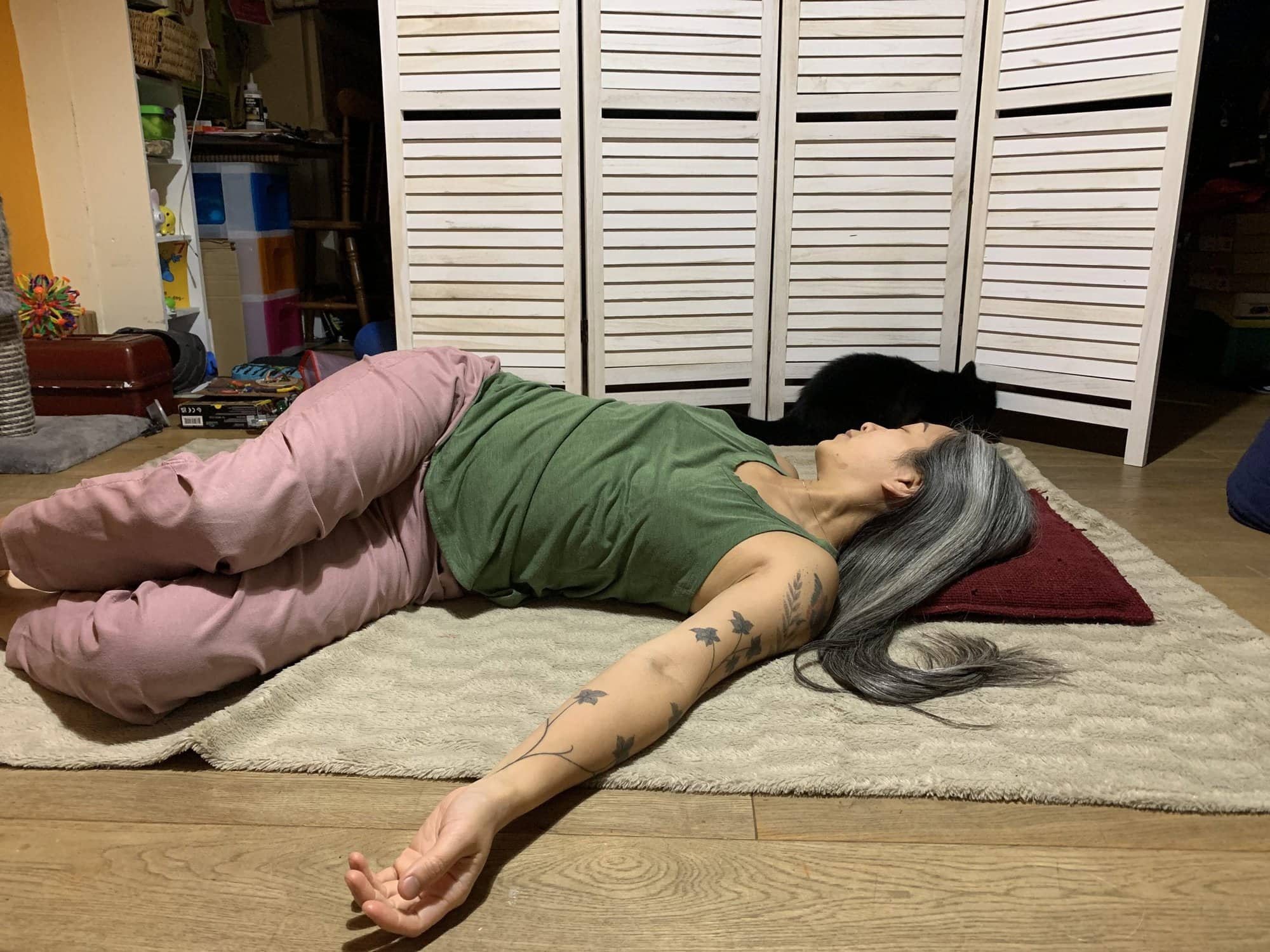
2) Malasana (squat)
Start from standing and bring the feet hip width apart with the toes pointing slightly out, bend the knees and squat down. I noticed my 8-year-old struggle to squat all the way down which I thought is strange, considering he joints are much fresher. Then I realized that he is trying to squat down with his hips above his ankles – you will need super flexible Achilles to squat without lifting your heels! So, I asked him to try, instead of sitting his bum on his heels, think about sticking his bum out behind him, then all of a sudden squatting becomes much easier. When squatted, if you feel yourself toppling backwards, try widening the feet.
If it feels too intense on the Achilles, place some support under the heels such as a rolled-up blanket, a cushion or a book to raise the heels off the ground. If it feels too intense on the hips, sit on a yoga block or two, a stack of books or a low stool to raise the hips.
Why:
As I am squatting down, I can feel those bottom few vertebrae release and it feels so good. My husband does it for his hips as they get tight. This is also a nice release for the Achilles if you wear heels.
When:
I like to do it throughout the day as and when my lower back feels stiff. You will find me squatting in the kitchen while the kettle is boiling, in the bathroom while waiting for my little boy to finish his shower, and sometimes just around the house when I’m not doing anything.
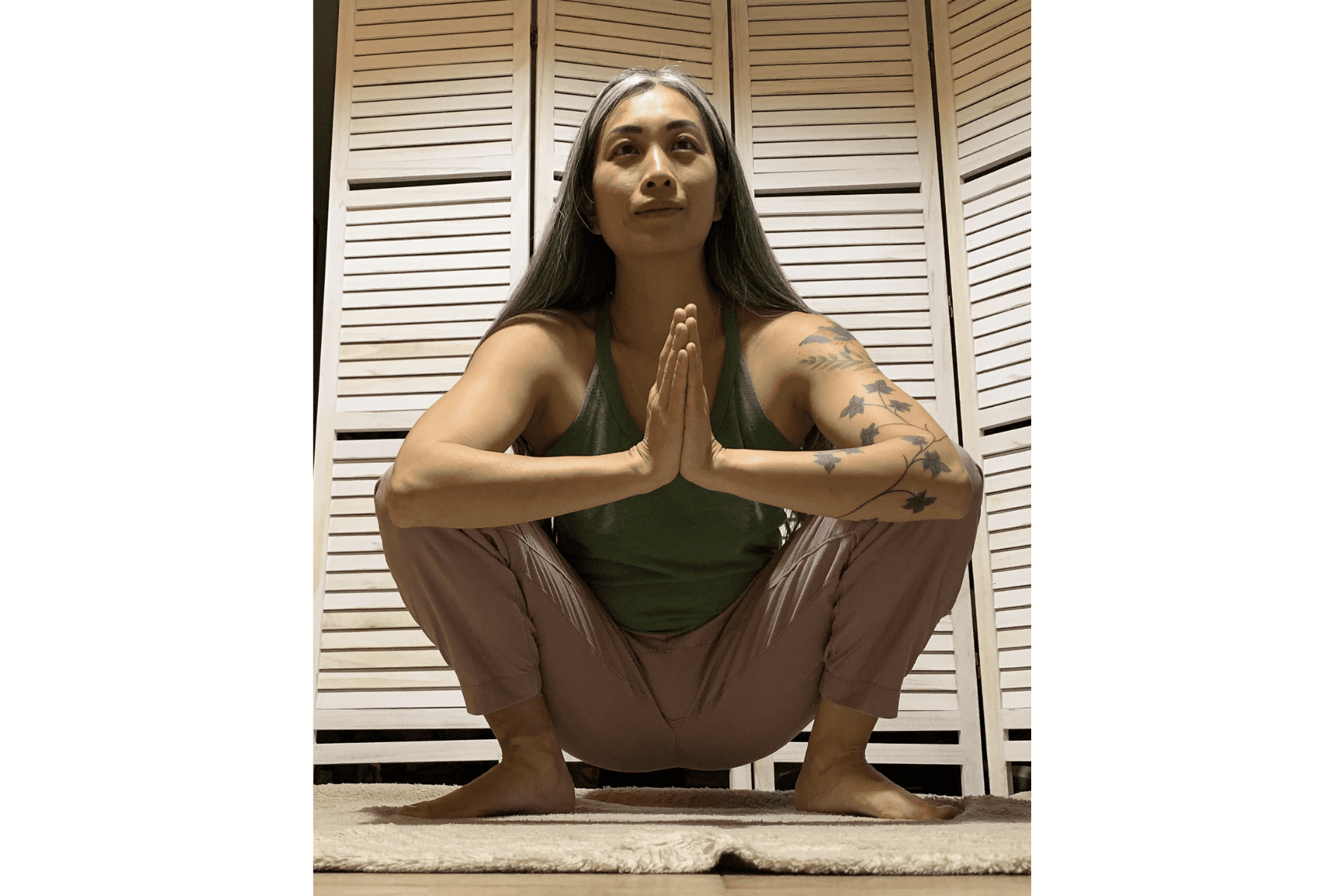
3) Savasana (corpse pose)
The simplest thing to do is just to lie down somewhere comfortable – the floor, the sofa or a reclinable chair (if you’re in an office for example). If you’re at home, it may be tempting to lie down in bed, but personally I prefer not to because I know I will doze off. I find it more beneficial to stay awake so that I feel rested afterwards instead of groggy.
Make yourself comfortable with cushions, blankets, eye bags, etc. so that your body feels warm and supported, and aim to stay still for 15 or 20 minutes. I like having my legs slightly raised with a bolster under my knees or by resting my lower legs on a chair. This allows my lower back and hips to be more relaxed and helps drain the fluid out of the legs.
Why:
Because we all need to slow down and take a break even when we don’t think we have the time.
When:
Working from home means I can do that in the middle of the day, but I know it is not something everyone can do. If you are at a workplace where this is not possible, perhaps take a Savasana as soon as you get home to reset. A short Savasana goes a long way. I get the mid-afternoon energy dip when I’m working, and I used to just plough through that dip because I felt that’s the way to get more done. Taking a 15-20 minutes Savasana in the early afternoon just before the dip has been a revelation. My energy level and focus are much more consistent in the afternoon.
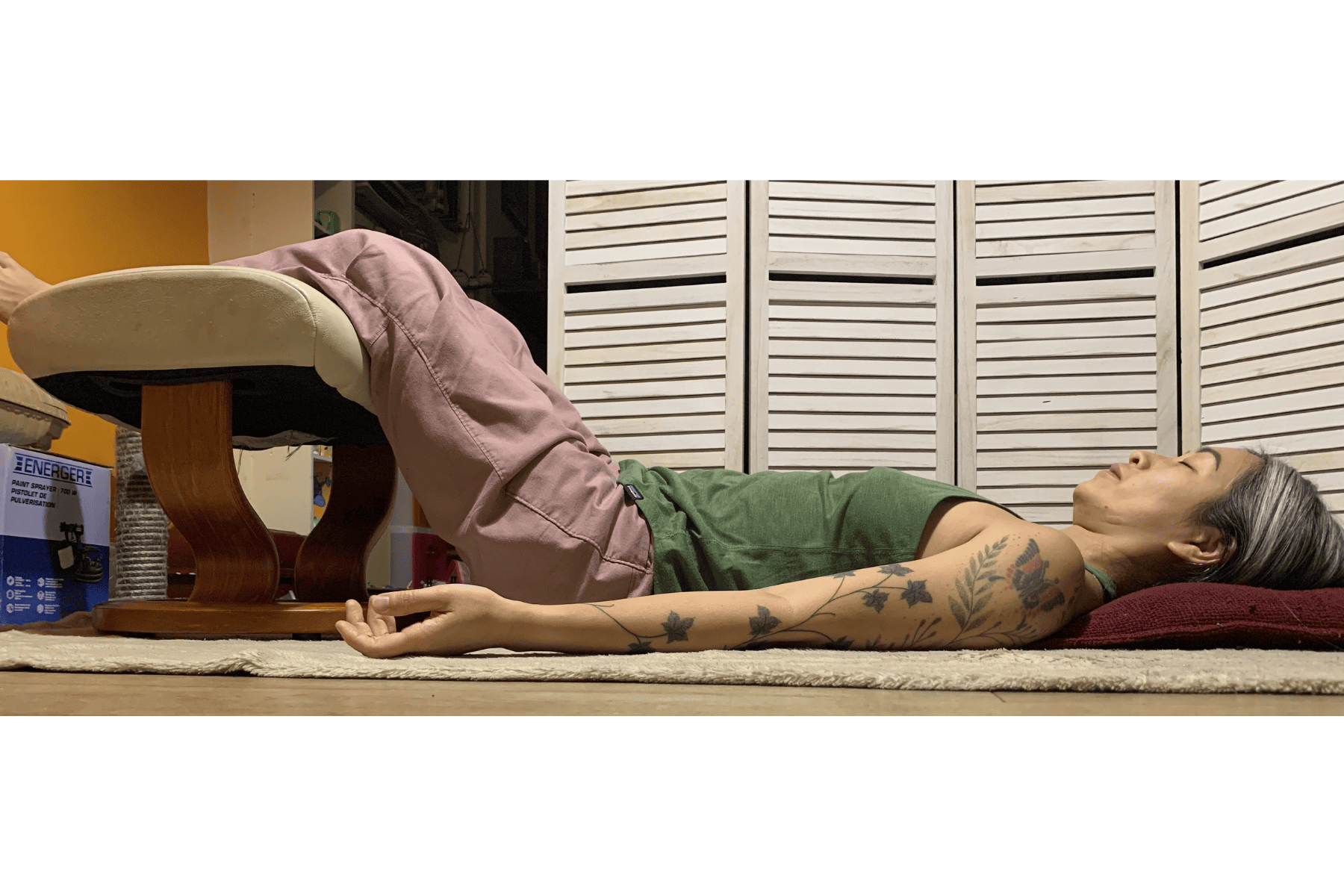
4) Supported fish pose
Place a bolster on the floor, sit facing away from the bolster with a little gap between you and the bolster, then lay the back onto the bolster so that the head and the upper body are resting on it. Make sure the head is supported on the bolster and not dangling off the top edge.
If you don’t have a bolster, look for other ways to support the body using items you find around the house. For example, if you have yoga blocks, you can place one under the head and one between the shoulder blades, so the two blocks form a T-shape with a gap in between. Place a folded fluffy blanket or cushion on top to soften the edges of the blocks. No yoga blocks? Try using a thick blanket, rolled or folded up into a sausage shape, or stack up a pillow or two.
The aim of the props is to lift the chest and support the head, so that the chest and the front of the shoulders naturally open under their own weight. Play around with different objects around the house to find what works for you.
Why:
I find coats and jackets to be quite restrictive around my broad shoulders. If it’s a cold windy day, I might be hunched up as well. When I get home, my shoulders, especially between the shoulder blades, would feel stiff and sometimes achy. This pose is great to open up the chest and shoulders to counter the hunching.
When:
In the evening when my shoulders feel tight, perhaps while waiting for food to cook or the laundry to finish.
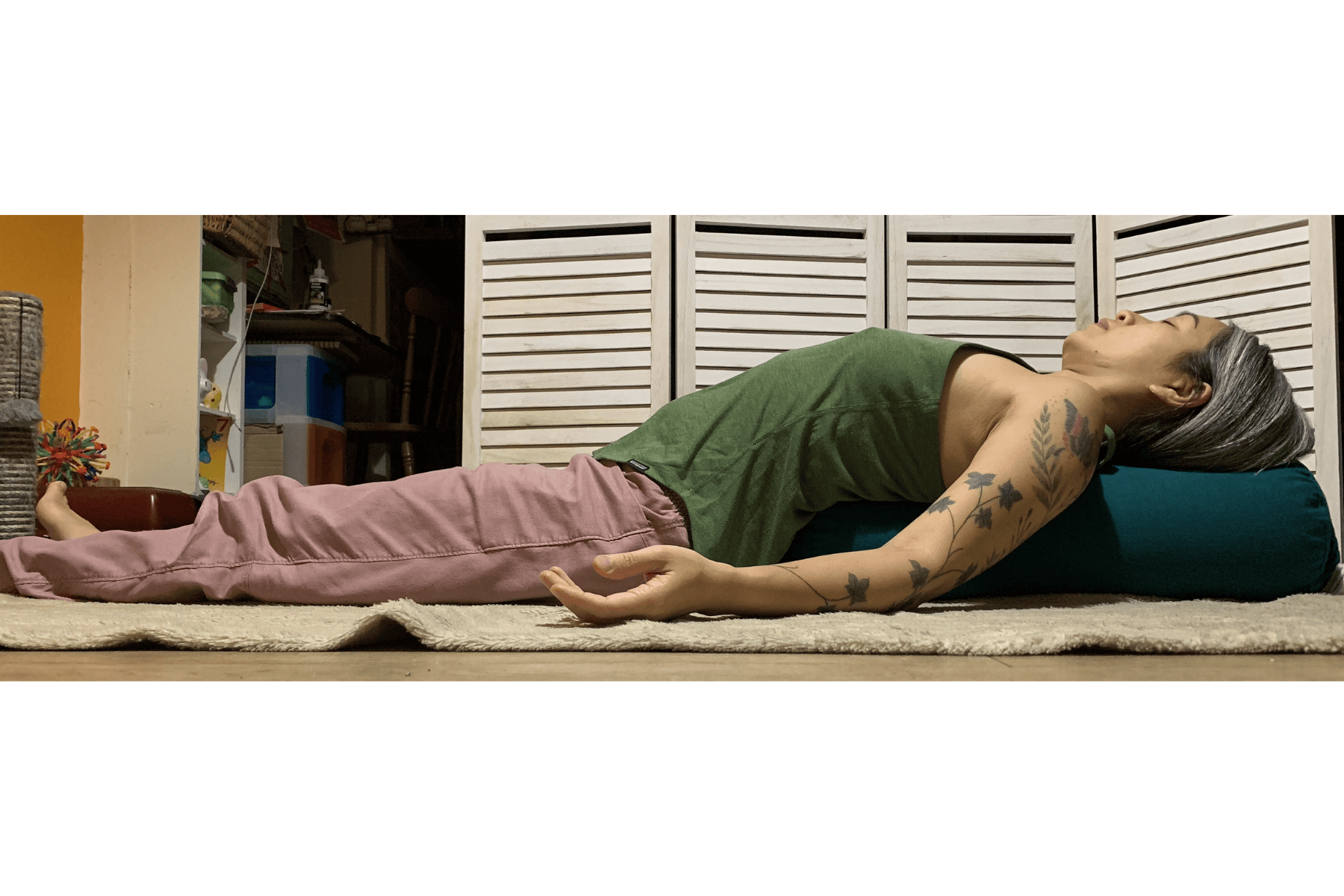
5) Supported child pose
If you have a bolster, straddle one end of the bolster and gently lay the body onto the bolster. No bolster? Pile up some pillows or cushions into a long sausage. The bolster or pile of pillows needs to be a little longer than the length from your head to your hips so that there is enough space for your whole torso and head to rest on.
Once you are lying down on your front, turn the head to one side and rest on the cheek rather than on the ear to reduce the amount of twist in the neck. Tuck the chin towards the chest slightly so that the back of the neck is long. Allow the arms to rest where they feel comfortable, maybe experiment with resting them on a folded blanket or cushions if you’re lying on the cold floor.
If the top of the feet feels uncomfortable, roll up a blanket or a bath towel and place it at the base of the shin to support the ankles.
Why:
Life can be overwhelming and sometimes I just need to shut the world out for a moment. Being in this pose allows me to go deep inwards and give me a chance to reboot.
When:
As and when I need to shut down for a few minutes, sometimes it’s the middle of the day.
